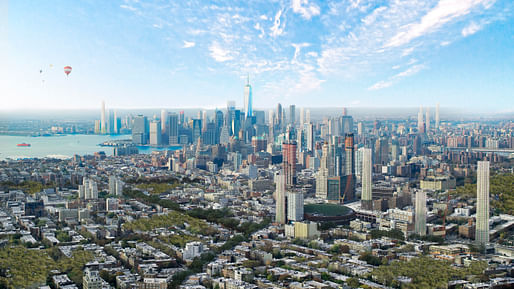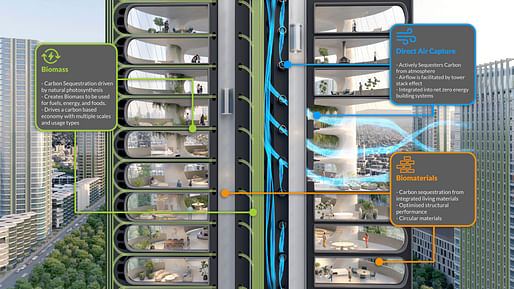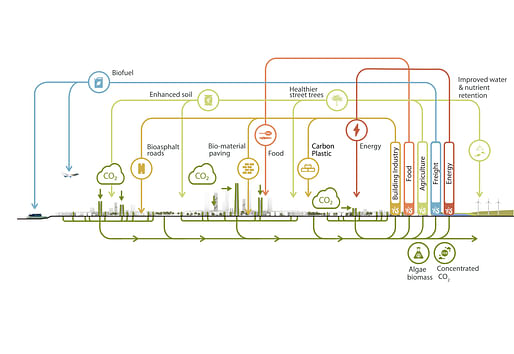
With COP26 entering its final day in Glasgow, Skidmore, Owings & Merrill have used the event to unveil their vision to transform the built environment into a network for absorbing carbon. Titled 'Urban Sequoia,' the project is centered on the concept of “forests” of buildings which sequester carbon and produce biomaterials to support a new carbon economy.

To create the scheme, SOM based their approach on an optimization of building design, a minimizing of materials, the integration of biomaterials, and the use of advanced biomass and carbon capture technologies. As a result, the firm estimates that if every city around the world built an Urban Sequoia in line with their design, the built environment could remove up to 1.6 billion tons of carbon from the atmosphere every year.

“We are quickly evolving beyond the idea of being carbon neutral,” said SOM Partner Chris Cooper as the project was unveiled. “The time has passed to talk about neutrality. Our proposal for Urban Sequoia — and ultimately entire ‘forests’ of Sequoias — makes buildings, and therefore our cities, part of the solution by designing them to sequester carbon, effectively changing the course of climate change.”

The vision unveiled by SOM includes a prototype for a high-rise building which could be built using construction techniques and technologies already available today. According to SOM, the building can sequester as much as 1,000 tons of carbon per year, which is the equivalent of 48,500 trees. Architecturally, the scheme incorporates natural materials such as bio-brick, hempcrete, timber, and biocrete, reducing the carbon impact of the scheme by 50% versus an equivalent building constructed from steel and concrete.

After 60 years, SOM’s prototype would absorb up to 400% more carbon than it emitted during construction. The design team imagines the captured carbon being repurposed for industrial uses as part of a new carbon economy, while the building’s façade integrates biomass and algae to support the production of biofuel for heating systems, transport, or a bioprotein source.

“The power of this idea is how achievable it is,” explained Yasemin Kologlu, Principal at SOM. “Our proposal brings together new design ideas with nature-based solutions, emerging and current carbon absorption technologies, and integrates them in ways not done before in the built environment.”

SOM’s unveiling of Urban Sequoia was one of several notable architectural contributions at COP26. Norman Foster used the event to highlight the need to consider embodied carbon in the design and construction process, while the event’s Build Better Now virtual exhibition highlighted the impact of sustainable projects around the world, including the world’s first raw earth house constructed using 3D printing.

SOM’s vision for the future of urban habitats comes soon after the firm released their vision for a space habitat prototype constructed from advanced materials such as graphene. The firm has also recently unveiled a robotically fabricated timber pavilion at the Chicago Architecture Biennial, and an atmospheric sculpture in Munich designed in collaboration with artist Janet Echelman.

No Comments
Block this user
Are you sure you want to block this user and hide all related comments throughout the site?
Archinect
This is your first comment on Archinect. Your comment will be visible once approved.